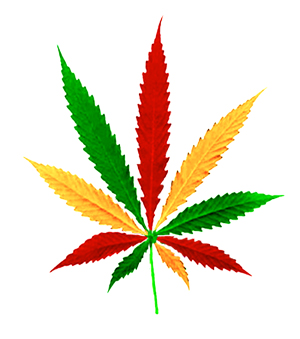Introduction:
There are three major types of lighting systems available right now: incandescent, fluorescent, and high intensity discharge.
Incandescent lights are horribly inefficient (especially the screw-in "grow bulb" type) and really not an acceptable option
for plant growth. Although they are inexpensive to purchase, their cost of operation makes them the costliest source of light.
Fluorescents:
Until the early 1980's most indoor growers used fluorescent lights to illuminate their garden. These tubes have tremendous
advantages over incandescents. They emit about 3 times as much light as an incandescent (given the same wattage), and the
light spectrum is one that plants con use more effectively.
However, they do certainly have their limitations. Light is emitted over a large area, so it is not concentrated. Because
of this, the lights have to be hung very close to the plants (usually within 2" or so from the grow tips), and constantly
moved to accommodate plant growth. This makes garden maintenance rather difficult, even when the lamps are hung on chains.
Florescents are, however, very useful in cloning, and starting seedlings. Because in these stages, a plant is not growing
vertically very quickly, the disadvantages of moving the lights are reduced. They also put out a more gentle light than the
HID lamps, and release less heat. The fact that they produce less heat is very important to those growing in enclosed and
not-especially-well ventilated spaces.
If you choose to use fluorescents, it is best to purchase the 'cool white' variety. The ones that are sold as grow lamps
(including grow-lux, vitalite, etc.) are much less efficient than a standard fluorescent, and just do not put out enough light
to be useful. The slightly different spectrum produced by these lamps does nothing for most plants. Some growers have reported
excellent results by using a mixture of cool-white and warm-white lamps in a florescent fixture.
High Intensity Discharge Lamps (HID's)
High intensity discharge lamps are easier to use, and more efficient. Low wattage HIDs are sometimes sold for household
outdoor use. Large Wattage lamps are used for lighting streets, parking lots, stadiums and other large areas. They come in
two basic flavors:
METAL HALIDES
or MH lamps emit a white light that looks slightly bluish. They are used to light stadiums, convention
centers, gymnasiums, and other large areas where a natural looking light is desired. HIGH PRESSURE SODIUM
or HPS lamps
emit a pink or amber light. They are used for lighting parking lots and other areas where the color of the light is not important.
HPS units are much more efficient than MH ones, producing more light and less heat per watt of energy consumed. They are often
used alone with no detrimental effect on the plants, and will promote faster plant growth than MH lamps during both vegetative
growth and flowering. Combinations of bulbs are _NOT_ required, as the HPS lamp does produce all of the light spectrums necessary
for healthy growth.
There is a relatively now type of HPS lamp that has become available. It is called the San Agro lamp (Look in _Grower's
Edge_ Magazine for more than a few distributors. Basicly the designers of this lamp took a 400w HPS lamp, and added another
30W element to it, However, this new element puts out blue light, to help fill in the parts of the spectrum that a standard
HPS is missing. I've never actually seen one of these bulbs, so I can't tell you about how efficient they are, but if a Hydroponics
magazine thinks they're terriffic, I can't disagree.
MH lamps are available in 175,200, 400 and 1000 watt sizes. HPS lamps come in 50, 75, 150, 400 and 1000 watt sizes. San
Agro comes in 430w only, but it works with a 400w HPS ballast. Each lamp requires its own ballast, which comes with the fixtures
that are designed to use these lamps, and are also available separately.
The following chart shows how much light each lamp emits, and the area that it covers adequately:
|
Lamp |
# of Lumens |
Square Feet |
|
4'FL (CoolWhite-40W) |
2,960 |
1-2 |
|
8'FL (CoolWhite-75W) |
5,800 |
2-4 |
|
MH 175W |
14,000 |
5-10 |
|
MH 400W |
40,000 |
12-20 |
|
HPS 70W |
7,600 |
3-6 |
|
HPS 150W |
16,000 |
6-11 |
|
HPS 400W |
50,000 |
15-30 |
Gardens should receive 1000-3000 lumens per square foot. Successful gardens usually are lit at around 2,000 lumens per
square foot. During the vegetative stage, plants stretch out when they receive low levels of light. During flowering, the
flowers are looser and sparse.
So what is the best lamp for grow6ing? It depends on your budget. HPS lamps are by far the best overall, but they are also
the most costly to purchase and setup (although some less honest growers have a tendency to steal them from college campuses
and the like). However, they are the cheapest to operate, and the utility savings does eventually add up.
A quick warning: At least in the US, there are large government agencies whose only purpose is to eliminate the growth
of marijuana. Although purchasing a high powered lighting system does not mean that you will be growing pot (and many people
grow other things artificially), it is still not a really good idea to link your name with the purchase of one of these lamps
(especially the larger ones). Go into the store knowing exactly what you want, pay for it in cash, and do not give them your
name (or give them a false one if they even ask). Most lighting distributors will not ask any questions.
I wish you a healthy and happy crop.
